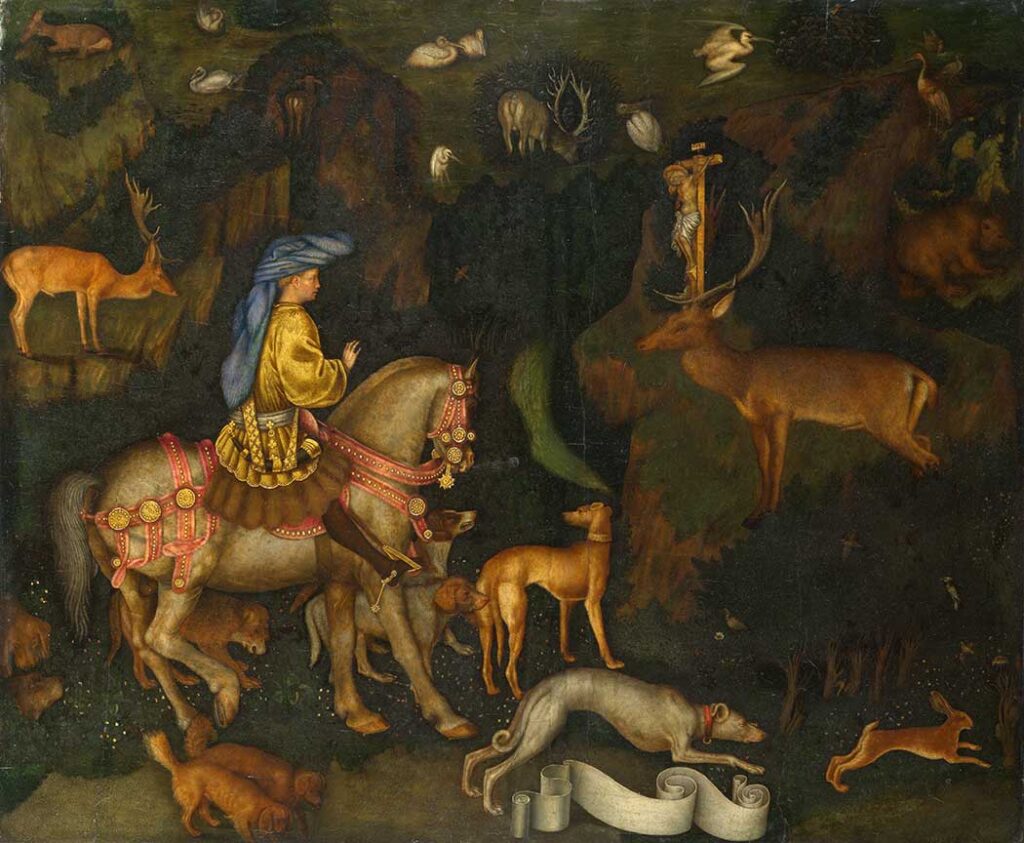
The Vision of Saint Eustace by Pisanello was created in 1438 and the painting is in National Gallery, London. The size of the work is 54,8 x 65,5 cm and is made of egg tempera on wood.
We are looking at a miraculous event. An elegantly dressed huntsman has been stopped in this tracks by an apparition: a large stag with a Crucifix between its antlers. This is Saint Eustace, whose story was told in the Golden Legend, the famous medieval collection of saints‘ lives. A Roman soldier named Placidus was out hunting when he had a vision of a stag with Christ on a shining cross between its antlers. He converted to Christianity at once and changed his name to Eustace.
He doesn’t look like a Roman soldier here, though. Instead Pisanello has depicted an Italian prince, in a fantastic blue hat, out hunting with his hounds. We do not know who this painting was for, but its small size suggests it was for the private enjoyment of an aristocrat. Although he was rarely shown in Italian art, Saint Eustace personified the ideals of the medieval knightly class, for whom hunting was not just a hobby but an enormously important activity. It was seen both as a metaphor for the soul’s search for God and as a virtuous activity which kept men busy – and therefore out of temptation’s way. Most importantly it was the primary training for war, which was aristocracy’s most important function.
Pisanello was especially famous for his ability to show animals. The huge number of his surviving drawings include various studies for the creatures in this painting, some taken from model books, some taken from earlier artists and some from live and dead animals. This painting is full not just of various dogs – some seemingly taken from the lavishly illustrated hunting treatises which were very popular in the fifteenth century – but also birds, a hare and even a bear; all are amazingly lifelike. He paid meticulous attention to detail, comparable to that of contemporary Netherlandish artists such as Jan van Eyck. Look closely and you can see the spiked wheels on the saint’s long rowel spurs and the way the horse’s shoes turn up at the ends to give extra grip on wet ground.
